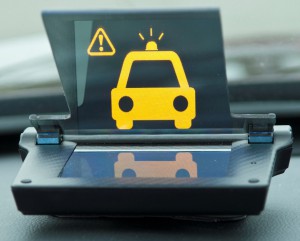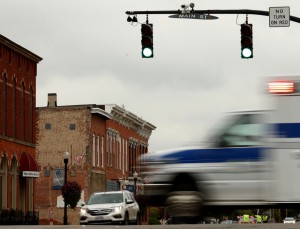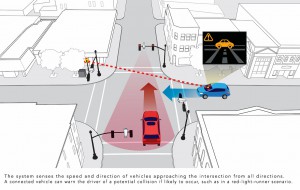
Honda's Smart Technology uses V2X technology to make drivers aware of potential hazards in an intersection.
Honda has demonstrated its “Smart Intersection” technology that connects a vehicle to its surroundings to help reduce traffic collisions at intersections, which account for 20% of the 35,000 traffic deaths that occur annually in the U.S. and 40% of all collisions.
The technology was developed in partnership with Marysville, Ohio, the home of Honda’s Research and Development unit where, as part of a Smart Mobility Corridor project that addresses the limitations of on-board vehicle sensors in reducing traffic collisions at roadway intersections.
“Honda believes that V2X technology is an essential component of a smarter and safer transportation ecosystem and can play a role in our dream for a zero-collision society,” said Ted Klaus, vice president of strategic research at Honda R&D Americas Inc.
“By partnering with the City of Marysville and the State of Ohio, we believe this research will give us a better understanding of how V2X technologies can be further advanced and most effectively deployed for the benefit of all road users,” Klaus said.
The “Smart Intersection” technology, utilizes Honda’s proprietary object recognition software in conjunction with intersection-mounted cameras and V2X communications, allows cars to virtually see through and around buildings and walls in virtually all weather conditions to help identify and alert drivers to otherwise hidden hazards.
(Traffic fatalities fall in 2017, stemming two-year rise. Click Here for the story.)
Four cameras mounted above the traffic lights at each corner of the intersection capture bird’s-eye-view video of surrounding vehicles and pedestrian traffic out to a 300-foot range.
Honda’s proprietary image processing software then creates a 360-degree image of the intersection that classifies vehicles and other moving objects, such as pedestrians, motorcycles and emergency vehicles, and broadcasts pertinent information to surrounding vehicles via a dedicated short-range communication (DSRC) signal.
Each connected vehicle’s on-board computer decodes the information and, when necessary, provides both visible and audible alerts to the driver, intelligently supporting them to take corrective action to avoid a potential collision.
Honda has committed to using 200 connected vehicles for evaluation in the 33 Smart Mobility Corridor and Smart Columbus projects.
(Click Here to see why better headlights could save pedestrians’ lives.)
“The City of Marysville is appreciative of our rich history with Honda of America and we are committed to our partnership with them to support their development and testing of autonomous and connected vehicles,” said Marysville Mayor J.R. Rausch. “We are proud they chose Marysville to deploy this Smart Intersection technology here.”
Honda, like several other automakers, is pursuing a goal of zero-collision society. It already using advanced technologies in its vehicles such as the Honda Sensing and AcuraWatch suites of advanced driver-assistive safety technologies.
More than 1 million Honda and Acura vehicles on the road today are equipped with these systems, which can help reduce the likelihood or severity of a collision and also serve as a bridge to highly automated vehicles of the future.
Honda also is targeting 2020 for the deployment of vehicles with highly automated highway driving capability and 2025 for the technological achievement of SAE Level 4 automated vehicles for personal use.
(To see why advanced driver assistance systems could raise, not cut insurance costs, Click Here.)
Honda R&D Americas Inc. was incorporated in 1984 after beginning operations in California in 1975. HRA is responsible for creating advanced products and technologies that provide new value to Honda and Acura customers.


